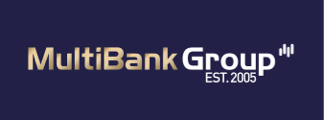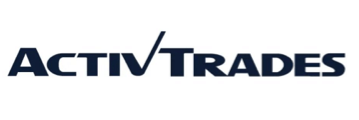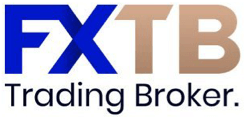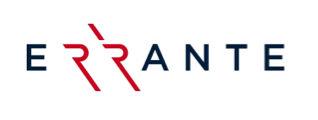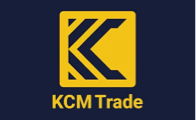FBS is a globally active CFD and Forex broker established in 2009, operating under multiple regulatory frameworks to serve traders across different regions, including a strong base in Asia. The company has built its reputation on providing accessible trading conditions, high leverage options, and a diverse selection of instruments covering currencies, commodities, indices, and cryptocurrencies. Over the years, FBS has expanded through entities licensed by the ASIC, CySEC, FSCA, and FSC, ensuring that its operations meet a broad range of international standards while maintaining flexibility for regional clients.
For traders in Asia, FBS represents a practical gateway into global markets. The broker supports multiple account types designed to accommodate beginners, intermediate users, and experienced professionals—each optimized for different risk levels and pricing preferences. Combined with reliable order execution, multilingual support, and compatibility with both MetaTrader 4 and MetaTrader 5, FBS offers a well-rounded trading environment that balances cost efficiency with accessibility. In this review, we examine its regulatory coverage, trading conditions, spreads, platform experience, and overall suitability for Asian traders seeking a secure and versatile broker.

Between 60 to 80% of retail CFD accounts lose money.
| Regulators | ASIC FSCA FSC CySEC |
|---|---|
| Minimum Deposit | $5 |
| Leverage | Between 1:30 and 1:3000 | Payment Methods | Bank Transfer Visa Mastercard Cryptocurrencies |
On first contact, FBS presents itself as a mass-market retail broker with a strong emphasis on accessibility and choice. The site structure revolves around straightforward product pages for each account type (Cent, Standard, Zero Spread, ECN) and companion information on swap-free options and demo trading. Compared with boutiques that only offer a single pricing model, FBS invites the user to pick a lane: spread-only simplicity (Cent/Standard), all-in ultra-narrow pricing with a commission (Zero Spread), or a more classic ECN path with commission and variable spreads (ECN). This modularity can be useful for beginners experimenting with sizing and for experienced traders who already know how they want to pay for liquidity.
From a risk and disclosure angle, the broker’s materials repeatedly reference jurisdictional differences. That’s a cue for the reader to think in “which entity am I signing with?” terms rather than assuming identical protections everywhere. If you’re in Asia, you may interact with an entity supervised by either a top-tier regulator (e.g., ASIC, CySEC) or a more permissive offshore framework (e.g., Belize). That split will drive leverage ceilings, negative balance safeguards, and complaint pathways. The practical takeaway: decide first what protections and leverage you need; then map that to the entity before you click “open account.”
Regulation
FBS operates through several legal entities overseen by different regulators (ASIC, CySEC, FSCA, and Belize FSC). This matters because the entity named in your client agreement sets the envelope for leverage, product scope, complaints handling, and the level of operational audits. As a practical rule: the stricter the regulator, the tighter the leverage and marketing rules—but the clearer the redress pathways if something goes wrong. Before funding, open the Client Agreement in your cabinet and verify which entity name and address appear on Page 1; that document—not the landing page—governs your protections.
Segregation of client funds is a baseline requirement under the stricter regimes. Segregation means operational cash and client money are kept in distinct bank accounts, reducing the chance that company liabilities contaminate client balances. Segregation is not the same as a deposit guarantee: market losses and margin close-outs still apply, and in non-EEA/offshore entities there is usually no statutory compensation scheme. Ask support to confirm the bank(s) and the precise form of safeguarding used by your entity, and keep your own reconciliation (deposits/withdrawals/statements) in case of a dispute.
FBS operates a multi-entity structure. Oversight, investor protections, and leverage rules vary by regulator. Based on the verified information you supplied, the relevant supervisors are:
- ASIC (Australia) – Australian Securities and Investments Commission.
- FSCA (South Africa) – Financial Sector Conduct Authority.
- FSC (Belize) – Financial Services Commission (Belize).
- CySEC (Cyprus) – Cyprus Securities and Exchange Commission.
How to interpret this mix as a retail trader in Asia:
- ASIC / CySEC entities typically apply stricter conduct rules, enforce segregation of client money, and cap retail leverage (e.g., 1:30 in the EU). Dispute resolution and compensation mechanisms are clearer, but the trade-off is lower leverage.
- FSCA sits between the strictest and the most permissive regimes. It enforces conduct standards and segregation but may allow higher leverage than the EU.
- Belize FSC offers flexibility on leverage and product scope. Protections, complaint frameworks, and audit intensity are lighter than ASIC/CySEC. It is common in the industry for higher-leverage accounts to be booked here.
None of these frameworks removes market risk; they define the rules around custody, conduct, and leverage. Your operational checklist should include: which entity is on your agreement, where client funds are held, whether negative balance protection is explicit, and what the leverage and margin-close-out rules are for your product set. Do that homework first—pricing only matters after protections align with your risk tolerance.
Account Opening
The account application is standard KYC: identity, address, trading experience, and appropriateness checks. Two items commonly delay approvals for Asian clients: utility bills that do not match the application address, and cropped/filtered ID photos. Submit full-frame, unedited scans, and ensure the Latin transliteration of your name matches your bank card. If your national ID lacks an expiry date, include a second document (e.g., passport) to avoid back-and-forth.
Decide on your base currency with care. If most of your P&L will accrue in USD pairs, a USD base simplifies reconciliation. If your everyday expenses are in SGD/JPY, a local base currency reduces conversion noise when you withdraw. Next, choose the pricing model that matches how you trade today—not how you hope to trade later. You can always open a second account type under the same profile once you have live data to compare.
Before sending a large first deposit, run a two-step validation: (1) demo only for platform muscle memory and symbol mapping; (2) a micro-funded Cent/Standard account to observe your live slippage, swap accruals, and funding/withdrawal timelines in your own country. Log timestamps and responses; those records become your operational baseline.
Account Types
FBS structures pricing along four live accounts—each aimed at a different cost/size preference. Below is an explanatory overview first, followed by a concise comparison table to help you align the model with your strategy.
Cent is built for very small monetary swings. Because balances and lot sizes are denominated in “cents” (with contract size scaled to micro-notionals), you can practice live execution without exposing much cash. Spreads float from 1 pip, commission is $0, and the leverage ceiling is up to 1:1000. For Asia-based beginners, Cent is a pragmatic bridge between demo and standard live, especially if you’re testing EAs or discretionary tactics that require real-fill feedback.
Standard is the spread-only workhorse for general trading. Spreads float from 0.5 pips, commission is $0, and the leverage ceiling is up to 1:3000 (jurisdiction permitting). Because costs are “all-in” within the spread, bookkeeping is simpler: you look at bid-ask and know your fee. This is convenient for swing or position traders, where ticket counts are low and simplicity matters more than shaving tenths of a pip.
Zero Spread targets traders who value precise entry costs. Advertised as a fixed 0-pip spread with a commission from $20 per lot per side, it mirrors an “all-in raw” experience where your cost is almost entirely the commission line. In practice, this model suits high-frequency, tight-stop or news-response tactics that benefit from a single, predictable fee per lot.
ECN offers commission-based access with variable spreads (listed from −1 pip, reflecting depth aggregation around top of book) and a commission of $6. Leverage is up to 1:500, and there are no stated limits on the number of open or pending orders. ECN’s appeal is depth and routing logic closer to institutional conventions; it fits algorithmic and active discretionary styles that want variable spreads plus a relatively low commission.
Account Types – Comparison Table
| Account | Min. Deposit | Pricing | Commission | Leverage (max) | Order Volume | Other Notes |
|---|---|---|---|---|---|---|
| Cent | $1 | Floating spreads from 1 pip | $0 | Up to 1:1000 | 0.01 to 1000 cent lots (step 0.01) | Designed for micro-risk live trading |
| Standard | $100 | Floating spreads from 0.5 pips | $0 | Up to 1:3000 | 0.01 to 500 lots (step 0.01) | Spread-only simplicity for general use |
| Zero Spread | $500 | Fixed spread 0 pip | From $20 per lot | Up to 1:3000 | 0.01 to 500 lots (step 0.01) | Predictable per-lot fee; tight entries |
| ECN | $1000 | Floating spreads from −1 pip | $6 | Up to 1:500 | 0.1 to 500 lots (step 0.1) | ECN routing; no trading-count limits |
Choosing a model: If you’re still forming discipline and want real-money fills with tiny P&L swings, start with Cent. If you trade modest frequency and prefer one number to track, Standard is tidy. If your edge depends on micro-spreads and you run many tickets, Zero Spread clarifies cost in exchange for a higher commission line. If you run automation or value depth and routing, ECN is the more “institutional” profile. Always validate your choice with a small live trial during your active hours to measure effective spread plus realized slippage and swaps.
Platforms
FBS supports MT4 and MT5, which cover most retail workflows. MT4 remains the path of least resistance for legacy indicators and older EAs; MT5 offers improved multi-threaded backtesting, depth of market, and more native asset classes. For Asian desks that automate, MT5’s Strategy Tester with tick data and variable spread modeling is a tangible advantage for robustness checks—especially when you simulate Tokyo vs. London sessions.
Hygiene practices matter more than platform choice. Keep a “clean” profile for trading and a separate sandbox profile for testing indicators/EAs. Use portable installations or separate terminals to avoid DLL conflicts. Back up your /profiles and /MQL4/MQL5 folders monthly. If you scalp or run latency-sensitive logic, consider a VPS with low ping to the broker’s trade server; then verify end-to-end latency inside the platform rather than trusting the VPS vendor’s dashboard.
On mobile, treat the app as a monitoring and exit tool rather than your primary entry workflow. Fat-finger risk is real on small screens. Configure one-tap trade confirmations and price alerts for your core symbols, and keep two-factor authentication enabled on your client cabinet to protect funding actions done from your phone.
Assets
Think in terms of liquidity windows and correlation. In Asia morning, USD/JPY, AUD/USD, NZD/USD, and regional indices like Nikkei and Hang Seng offer the most natural flow; European and US indices tend to “wake up” closer to their respective opens. If you hold multi-asset positions, map your cross-sensitivities: JPY often strengthens in risk-off regimes as equities fall; gold can spike on policy uncertainty while USD can move in the opposite direction depending on rate expectations. Build a narrow watchlist first (5–8 symbols) and add only when you consistently manage risk and execution across the initial set.
Available Assets
Below you can see which assets are available for trading with FBS:
| Asset | Availability |
|---|---|
| Currencies | 45 |
| Real Stocks | ✗ |
| Stock CFDs | ✓ |
| Commodities | ✓ |
| Indices | ✓ |
| Real ETFs | ✗ |
| ETFs CFDs | ✗ |
| Futures | ✗ |
| Options | ✗ |
| Bonds | ✗ |
| Cryptocurrency CFDs | ✗ |
| Real Cryptocurrencies | ✗ |
*Availability of certain assets may vary based on account type, platform, or region.
The product range at FBS is structured to cover the main liquid markets without diluting focus. The core lies in Forex, where dozens of major, minor, and emerging pairs are available with competitive execution. For most traders, this is where strategy development begins: a transparent order book, predictable liquidity cycles, and measurable volatility across sessions. FX remains the benchmark for learning risk management and execution timing before adding further complexity.
Beyond currencies, FBS integrates Commodities and Metals—notably gold, silver, and crude oil CFDs—providing diversification opportunities tied to macroeconomic events. Gold often acts as a volatility hedge or policy sentiment barometer, while oil reflects both energy dynamics and global growth expectations. These instruments demand awareness of rollovers and spreads that can widen during inventory or OPEC data releases, but they also teach traders how cross-market factors shape price movement.
The Index CFDs selection includes key global benchmarks such as the S&P 500, NASDAQ 100, DAX 40, Nikkei 225, and Hang Seng, giving exposure to regional equity sentiment without requiring equity ownership. Indices are attractive for position and swing traders because they integrate broad economic signals, corporate earnings trends, and central bank policies into a single price stream. Their leverage and margin rules differ slightly from FX, so check contract specifications carefully to align position size with volatility expectations.
Cryptocurrencies round out the multi-asset offer. These are CFD products reflecting digital asset price movements, not actual coin ownership. They can be valuable for volatility-focused strategies, but traders should account for weekend trading and larger overnight gaps. The absence of centralized exchanges makes spreads and funding costs more variable, so prudent risk sizing and constant monitoring are essential.
Overall, FBS’s asset structure balances accessibility with breadth. Each class can be approached within the same platform interface and margin system, reducing friction for multi-market experimentation. For a developing trader, this unified access shortens the learning curve: you can test macro ideas—currency reactions, commodity shocks, or equity pullbacks—without shifting between brokers. The key is not to trade everything, but to understand how these markets interconnect, then choose the subset that aligns with your strategy’s time horizon and risk appetite.
Spreads
Price quality has two layers: the quoted spread you see, and the effective spread you pay after commissions and slippage. For FBS: Cent and Standard concentrate costs inside a floating spread (from 1.0 and 0.5 pips respectively), Zero Spread advertises a fixed 0-pip spread with a commission from $20/lot, and ECN pairs variable spreads (listed from −1 pip due to book dynamics) with a $6 commission. To compare models, always express commission in pips on the pair you trade (roughly commission ÷ $10 for EUR/USD per lot) and add it to your average live spread during your active session.
Spreads Offered
Below a visual representation of FBS's spreads across several currency pairs:
*Spreads are variable and may change based on market conditions, account types and trading volumes.
Session microstructure matters. During Asia morning, spreads on EUR/USD can be wider than during London; USD/JPY and AUD/USD tend to be tighter. If your strategy enters on breakouts at illiquid minutes (e.g., just before a data print), your slippage may exceed any theoretical spread advantage. Run a 20-session log with columns for time, pair, quoted spread, commission in pips, and realized slippage (entry and exit). The model with the lower median effective spread + slippage is the one to keep, even if its headline spread looks worse.
Finally, match stop distance to the microstructure of your account. Ultra-tight stops (<10–15 points) on a high-commission, “0-spread” model can still underperform if you’re consistently slipped a few tenths of a pip. Conversely, swing trades with 40–80 pip targets often find that Standard’s simplicity improves discipline and that the commission savings of ECN are negligible at low ticket counts. The only robust answer is the one derived from your own logs.
Other Trading Costs
Swaps/financing: These are the silent P&L movers for anyone holding overnight. On FX, they reflect the interest rate differential between the currencies; on indices and commodities, they reflect the financing of leveraged exposure and sometimes dividend adjustments. Swaps change as rates move—check them before you open, not after you hold. A strategy that looks profitable on raw points can be negative after a month once swaps are included.
Currency conversion: If your base currency is SGD or JPY but most of your realized P&L accrues in USD, each closed trade can introduce small conversions. Over hundreds of tickets, the drift adds up. Either align your base currency to your primary quote currency or batch withdrawals less frequently to reduce repeated conversions. Keep a simple spreadsheet to reconcile the effect over time.
Banking rails and admin fees: FBS commonly shows $0 internal fees on deposits/withdrawals, but card issuers, payment gateways, and correspondent banks may charge. Test each rail with a small cycle (deposit → trade → withdrawal) to learn actual timelines and net receipts in your country. If you plan to go inactive, check the dormancy policy and either keep a minimum balance you are comfortable with or withdraw to avoid nuisance charges.
Trading Conditions
Trading conditions at FBS depend on entity and account type. Core parameters to confirm for your profile include:
Leverage: Up to 1:3000 is advertised on some accounts/entities (Standard/Zero Spread), 1:1000 on Cent, and 1:500 on ECN. EU/ASIC caps for retail will be much lower. Higher leverage reduces initial margin but magnifies equity volatility and the probability of margin stop-out—size accordingly.
Execution: Market execution across models, with ECN routing emphasized on ECN accounts. For Asia sessions, you may see tighter books on JPY and AUD pairs and thinner depth on some exotics—expectation management is key.
Order sizing and limits: The screenshots indicate 0.01 lot minimums on Cent/Standard/Zero and 0.1 lot minimum on ECN, with up to 500 lots max order size on most non-Cent accounts. ECN noted “no trading limits” in terms of number of open/pending orders; still practice operational prudence to avoid platform overload.
Hedging/EA use: Allowed per the official specs you shared. If you run grid/martingale logic, test on micro sizing first to understand margin footprints under volatility.
For Asian traders specifically, align your execution window with instruments that naturally carry liquidity in your morning. If you mostly trade New York events, the London–NY overlap may suit you better even if it’s late evening locally—just be deliberate about your sleep and reaction speed if you choose that window.
Is FBS a Good Option for Asian Traders?
The answer depends on which FBS entity you use and what you need from leverage and protections. As an educational summary:
If you prioritize stricter oversight and lower leverage, onboarding under ASIC or CySEC entities generally aligns with that aim, but confirm negative balance terms and product availability first.
If you need very high leverage for micro-sized experimentation (not recommended for large exposure), offshore entities (e.g., Belize) are the ones that typically offer it. Balance that with the lighter complaint mechanisms typical of such jurisdictions.
For beginners in Asia, Cent provides a safe runway to practice order entry and psychology with real fills and tiny monetary swings. Pair this with structured practice (journaling, screenshots, risk caps per day).
For cost-sensitive active traders, Zero Spread and ECN are the two to test head-to-head using your exact strategy and time window. Whichever yields the lowest effective spread plus slippage over a month is your capital-efficient choice.
Operationally, FBS meets the needs of a broad retail audience: common platforms, multiple account paths, and regionally familiar funding. The burden on the trader is to pick the right entity, model, and sizing discipline. If you execute that selection process deliberately, FBS can serve as a functional venue for both learning and systematic trading. If you prefer only top-tier oversight with lower leverage, you may still use FBS—just ensure your contract is with the appropriate entity and accept the leverage caps as a safety feature rather than a constraint.
Our Verdict
FBS is best understood as a flexible toolkit rather than a one-size-fits-all venue. With Cent, Standard, Zero Spread, and ECN, you can stage your learning curve: progress from micro-risk live fills to a pricing model that demonstrably lowers your total cost for your specific strategy. The multi-entity structure gives you a clear trade-off menu between regulatory strictness and leverage freedom; neither is “better” universally, only more or less suitable to your constraints.
For Asian traders, the combination of familiar platforms, regionally relevant instruments, and accessible funding options covers the logistics well. What determines success is the rigor you bring to measurement: log spreads, convert commissions to pips, measure slippage by session, and compare models with identical rules. That data—not slogans—should decide between Standard, Zero Spread, and ECN.
Risk management remains the decisive edge. High leverage can accelerate both growth and ruin; swaps can erode seemingly good trades; and execution quality can vary by minute and symbol. Traders who size conservatively, avoid correlated clustering, and pre-define “stop trading” conditions typically last long enough to benefit from the broker’s breadth.
Overall, if you want a mainstream MT4/MT5 environment with multiple pricing paths and broad asset coverage, FBS can serve as a competent venue. Choose your entity deliberately, start small, validate costs in your own session, and scale only when your logs show durable edge. That approach converts the broker’s flexibility into tangible, compounding advantages for your trading practice.
Frecuently Asked Questions
Which FBS entity should I choose?
Choose based on the protection/leverage mix you want. ASIC/CySEC lines generally imply stricter conduct and lower leverage; Belize allows higher leverage but lighter complaint mechanisms. Always confirm negative balance protection, margin close-out rules, and product availability for your entity.
Which account type is cheapest for me?
There is no universal winner. Convert each model’s commission into pips, add to the average spread you observe during your session, and include slippage. Run a two-week A/B test between ECN and Zero Spread (for example) using identical entry logic and lot sizes; pick the one with the lower effective cost and more stable fills.
Is Cent useful if I already used a demo?
Yes. Cent introduces real-money psychology and genuine fills with tiny cash swings. It’s ideal for rehearsing execution rules, testing EAs against live micro-structure, and pressure-testing position management before scaling to Standard or ECN.
What are the real risks of high leverage (e.g., 1:3000)?
High leverage reduces margin on entry but magnifies equity volatility. Small adverse moves can trigger margin close-outs long before your analytical stop. If you elect high leverage, keep lot size small relative to equity, avoid clustering correlated positions, and predefine a daily risk cap.
Does FBS allow hedging, scalping, and EAs?
According to the specifications you shared, all trading strategies are allowed and EA use is permitted. As always, validate operational stability (latency, slippage, partial fills) on a small live account before deploying size.
How do swaps affect longer holds?
Swaps reflect interest differentials or CFD financing rates and can materially impact P&L if you hold multi-day. Check long/short swap values in the platform before entering swing trades, especially on high-carry crosses or metals/energy symbols.
Note: Any opinions expressed in this article are not to be considered investment advice and are solely those of the authors. Singapore Forex Club is not responsible for any financial decisions based on this article's contents. Readers may use this data for information and educational purposes only.







